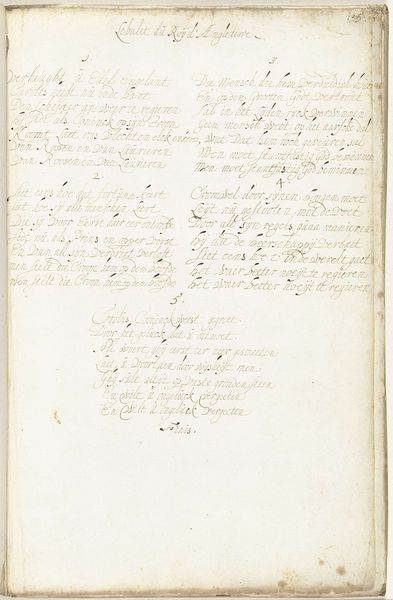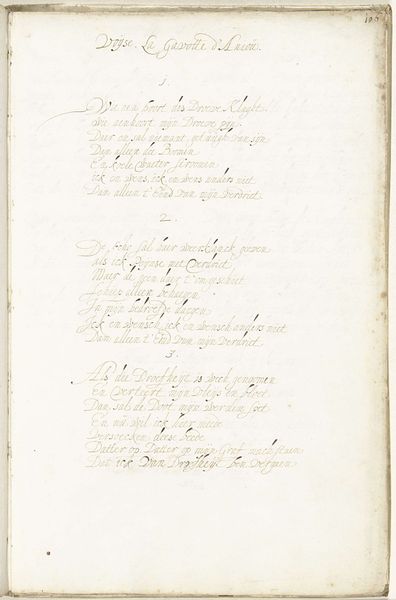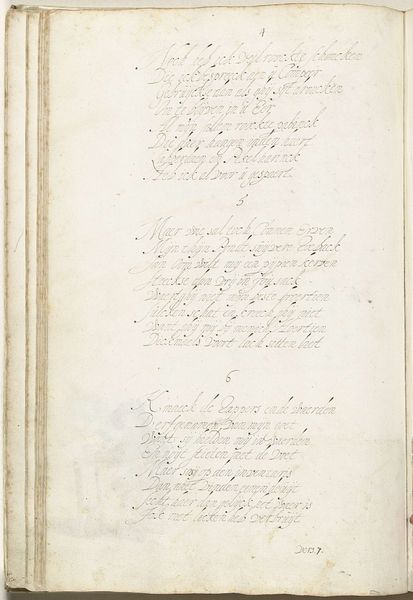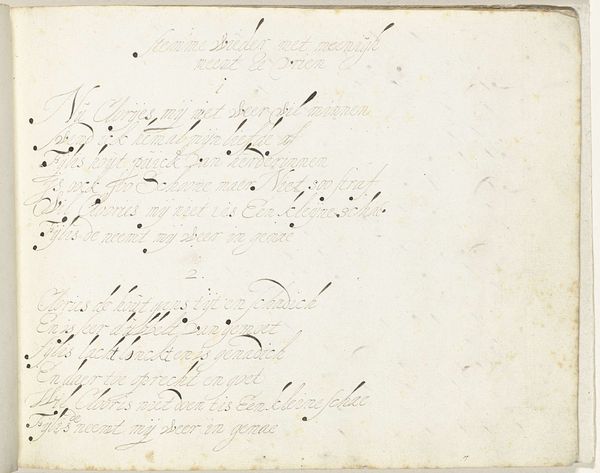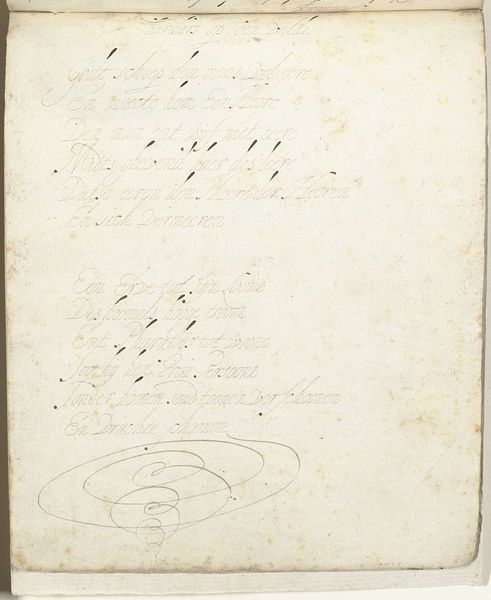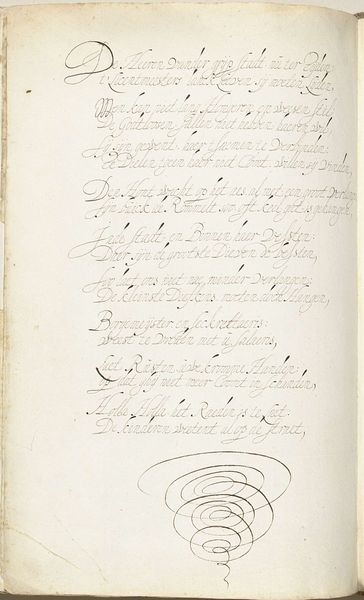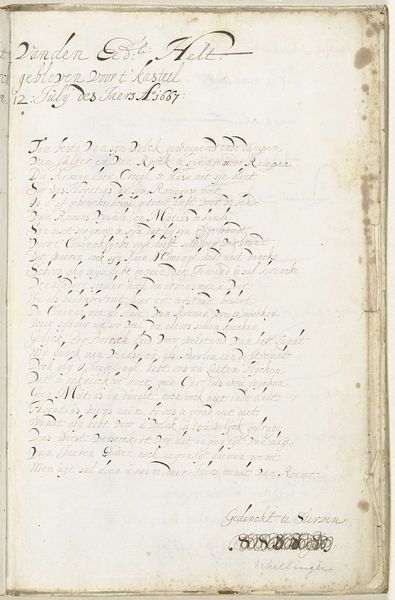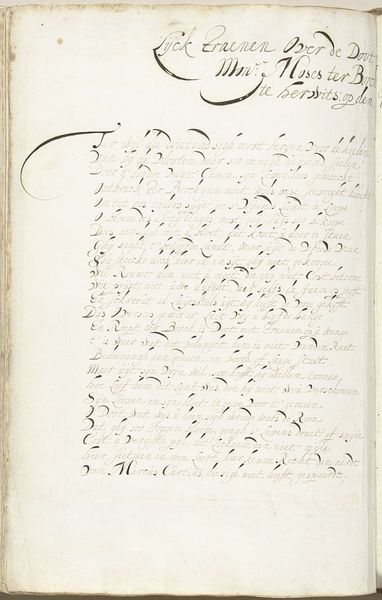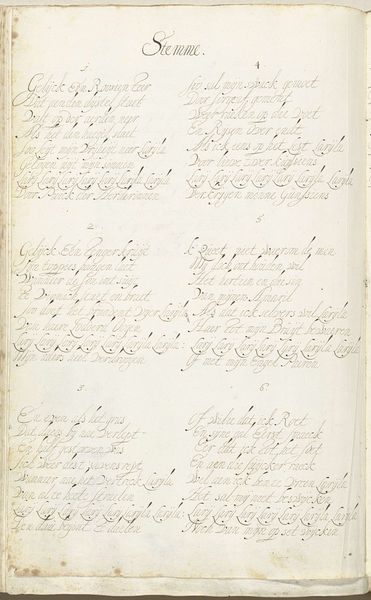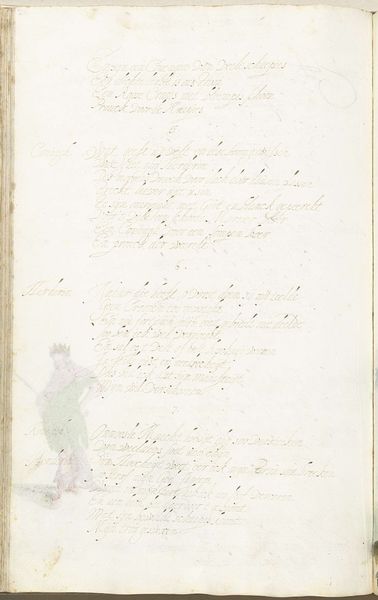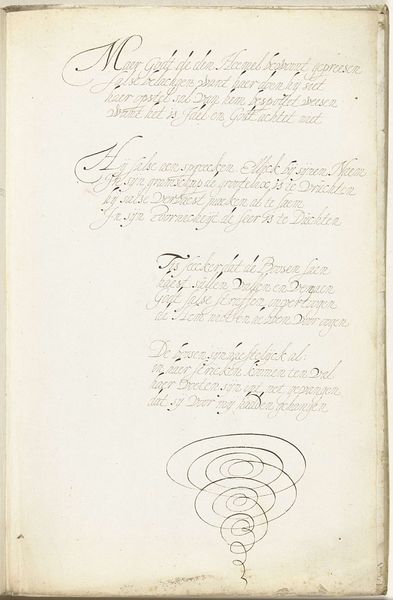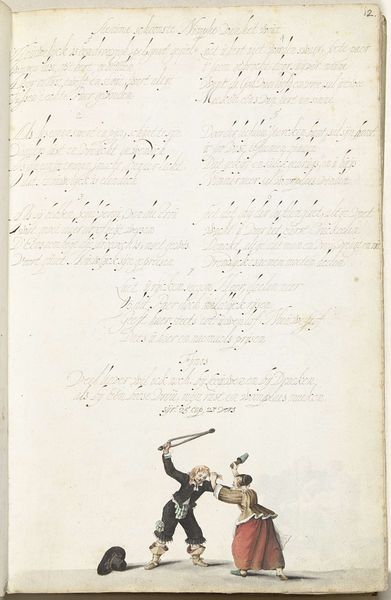
drawing, paper, ink
#
drawing
#
aged paper
#
toned paper
#
hand written
#
medieval
#
dutch-golden-age
#
paper
#
ink
#
intimism
#
calligraphic
#
calligraphy
Dimensions: height 313 mm, width 204 mm
Copyright: Rijks Museum: Open Domain
This poem commemorating Moses ter Borch was penned by his sister Gesina, likely in the mid-17th century, using iron gall ink on paper. Look closely, and you'll see the distinctive brown hue of the ink, made from tannins, iron salts, and a binder. Scribes favored iron gall ink for centuries because of its permanence and rich color. Gesina employed a quill, probably a feather carefully cut and shaped to create a fine, flexible point. Note how the pressure and angle of the quill influenced the varying thickness of each stroke. Gesina wasn't just writing, she was performing calligraphy, elevating the act of writing to an art form. The meticulous penmanship, decorative flourishes, and careful layout demonstrate her skill and artistic sensibility. In a time when literacy was not universal, handwriting signified status and education. Gesina ter Borch’s poem, therefore, transcends its personal subject matter, offering insights into craft, class, and culture in the Dutch Golden Age.
Comments
No comments
Be the first to comment and join the conversation on the ultimate creative platform.

